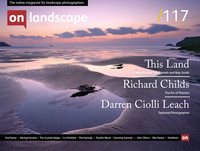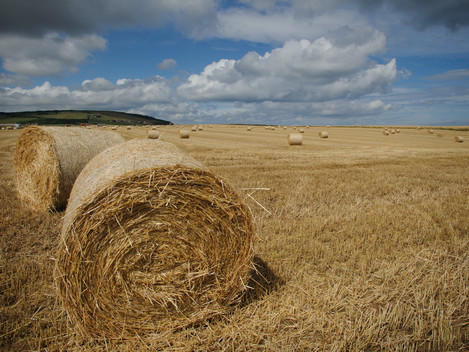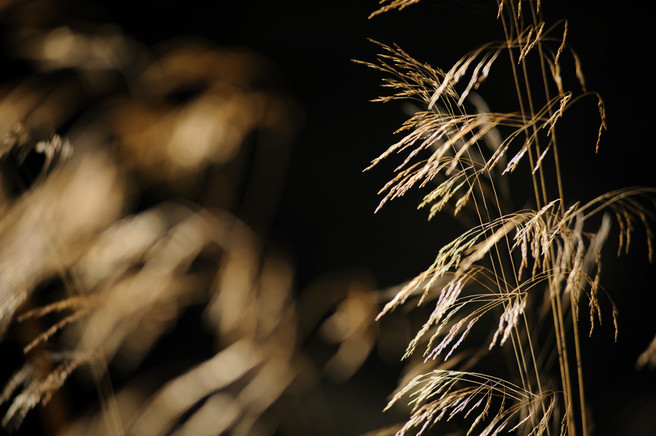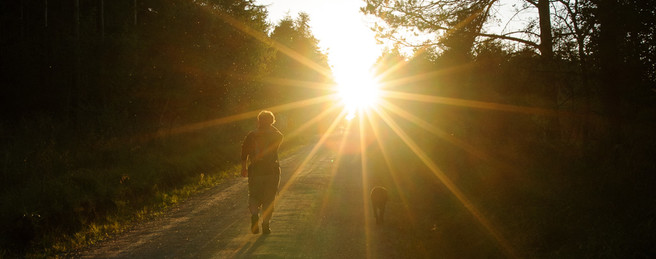It's not just the camera kit you need to take

John Clifton
My photography began at my father's side - he processed and printed his own pictures to save on costs, so I did the same. I still hope to ‘dust off’ my darkroom gear at some point, but have spent the last few years learning to make great digital prints. I love the convenience that digital offers, and the immediate visual feedback it provides, but it is still that final analogue print that really ex-cites me. When not working at Trailblazer Outdoors, in Pickering, I am usually out walking the fabulous land-scapes of the North York Moors National Park. This is a place I find endlessly inspiring, offering a huge variety of scenery and subjects in a compact and accessible package. I am also co-organiser of #MOORSVIEW - a bi-annual photography seminar addressing landscape and wildlife photography on the North York Moors and Coast.
I am first and foremost a walker, but I am also a keen amateur landscape photographer. For me, the two go hand in hand - with one enhancing the experience of the other. My walking background tends to make me prioritise comfort and safety in my choice of what I wear when I am out shooting landscapes. The photographic equipment I take with me, and the way I carry it, has to fit around these primary concerns.
My colleague Neil Armstrong is even better placed than me to advise on best practice in the great outdoors - being a long standing member of the Scarborough & Ryedale Mountain Rescue Team. This series of quarterly articles is a follow-up to a session we ran at MOORSVIEW, to highlight some of the issues photographers needed to be aware of when heading out into winter conditions. Beginning with Summer, we will also identify some of the outdoor gear we find useful when out in search of images.
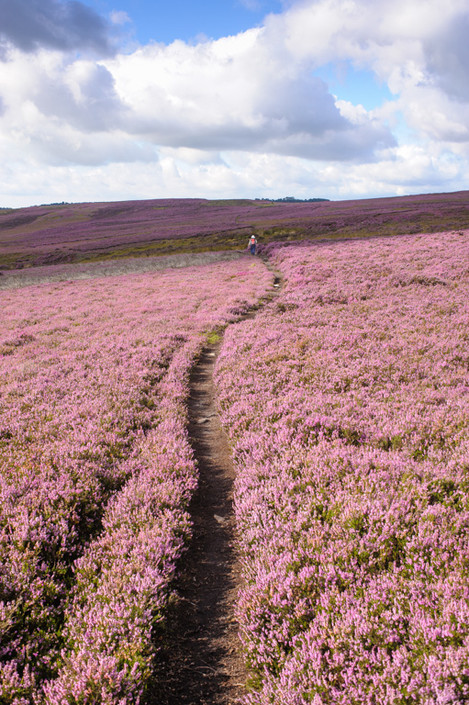
We all like to feel the sun on our backs occasionally, but landscape photography in Summer can take us to places where there is little or no shade.
Surviving Summer
Even in an English Summer, one of your first priorities should be maintaining good hydration. Here you may be surprised just how much fluid you should be drinking to keep you healthy. The Department of Health recommends that we drink at least 1.2 litres of water a day to stay well hydrated. The European Food Safety Authority is more generous - recommending 2.5 litres of fluid for men and 2.0 litres for women, of which 70-80% should come from drinks.
But this is under ‘normal conditions’. If you are carrying heavy photographic kit, over any significant distance, your body will burn more calories to produce the energy you need. You will probably breath more heavily - exhaling heat and moisture - and your body temperature is likely to rise significantly. Even if you travel fast and light, the heat of the Summer sun will make you warmer than usual.
Evaporation of sweat is one of the body’s main ways of helping you lose that extra heat. This and the increased respiration mean that you should be taking in even more fluid to replace what is being lost. For a full day’s walking, we normally recommend you consume at least 3 litres of water to stay well hydrated - more in hot weather. That water weighs 3 kilos - the equivalent of carrying an additional camera body and a couple of larger lenses.
Note here we are not just about feeling thirsty - inadequate hydration also leads to increased muscle fatigue, so you get tired more quickly. It can also muddle your thoughts - so critical safety and navigational decisions may become more difficult. This goes for photography too, of course - you are less likely to take great pictures if you are tired and not thinking clearly.
Now you may say that you never go far from your car when making images. That’s fine, but in my experience, I frequently find myself exploring multiple different angles, and clambering up and down slopes, to find an interesting or original viewpoint. All that effort soon translates into heat - however many miles you may or may not be covering over the ground.
Without being alarmist, it is important to be aware of the risks here. Heat exhaustion is a condition which is more likely to occur when a person is de-hydrated. It can come on quite quickly, or over the course of several hours, with symptoms that include tiredness, confusion, dizziness, muscle cramps and nausea. If untreated, it can turn into the far more serious ‘heatstroke’ - which is potentially life threatening.
Potential solutions…
Carrying all this extra fluid with you presents problems in two areas - the weight, and the volume. Our preferred solution to these is to use a hydration bladder - a flexible bag that fits inside your rucksack, with a drinking tube fed over your shoulder. The beauty of this system is that the weight and bulk are both well supported by the back system of your bag. You also don’t have to take your bag off to drink - indeed the tube dangling within vision reminds you to take regular drinks - ideally 150-200 ml every 15 minutes.
If you decide to rely on traditional drinks bottles instead, try to put them in external pockets on your rucksack - or somewhere else you can easily reach them while going along. Above all, don’t wait until you get to your intended location and drink everything in one go. You will feel bloated and lethargic if you do, and your body will probably already have begun to suffer some level of dehydration by then.
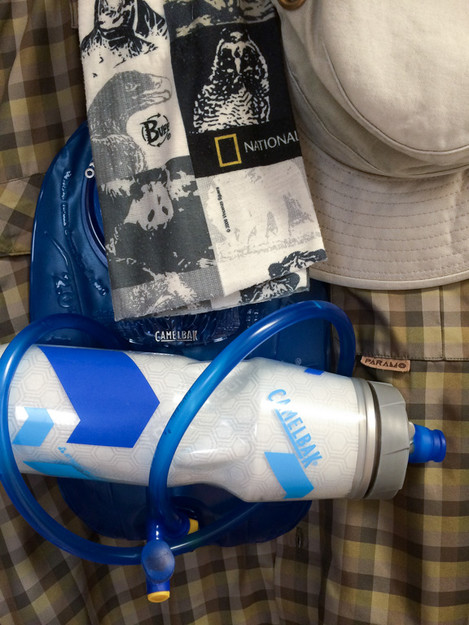
A practical way to carry larger volumes of water is in a hydration bladder, water bottles are OK for smaller quantities but need to be where you can reach them. High UV protection clothing and head and neck wear are also an essential defence against the Summer sun.
Now I have heard concerns about all that water being carried inside your bag - what if the bladder leaks all over your camera gear..? No doubt there will be some horror stories out there, but in our experience leakage is a rarity - and something I have never personally suffered. If you are concerned, you can put the bladder inside a waterproof sack, or critical photo gear inside dry bags.
The other thing people are sometimes concerned about is keeping the bladder clean and free from bacteria. The first thing to note is that inside surface will normally have an extremely smooth, glass-like finish. This makes it very difficult for dirt and other ‘nasties’ to attach to the surface, and makes the bladder easy to keep clean. You can also get small bottle brushes to keep the drinking tube clean should any deposit build up over a period of time. Bladder and tube can also be rinsed periodically in a weak solution of Milton fluid.
Clearly, it is also important not to leave your water bladder - or bottles for that matter - sitting in your rucksack, forgotten until the next time you decide to go out..! Rather like caring for your walking boots, the best policy is to rinse everything as soon as you get back from your trip. Drying is also important in this respect since bacteria cannot grow on a dry surface.
While you can get special drying arms for water bladders, our preferred solution is to keep them in the freezer. If you leave a little water inside and lay the bladder down flat, you even have a ready made cooling system for the summer - with a made to measure ice cube forming inside the bladder that will melt as you walk along, keeping your water cool and refreshing.
In some areas it may be possible to collect water from streams or lakes - so you don’t have to carry so much with you. However, you are then well advised to filter it, treat it with chlorine dioxide tablets, or ideally boil it, for maximum safety. The latter means carrying at least a small camping stove and fuel to power it. If you are out backpacking on a multi-day trip, these may be your only option, but for day trips carrying your water is likely to be the most practical solution.
Snacking vs. bingeing…
Little and often is also a good policy to apply to food. If you want to maintain your stamina, and your ability to think clearly, take food often. Our favourite solution here is a simple bag of mixed fruit and nuts - the fruit gives you a sugar boost, and the nuts provide slower release carbohydrate. Other practical options include muesli bars, fruit cake, bananas or other whole fruit - with the latter giving you back some of the fluid lost as well.
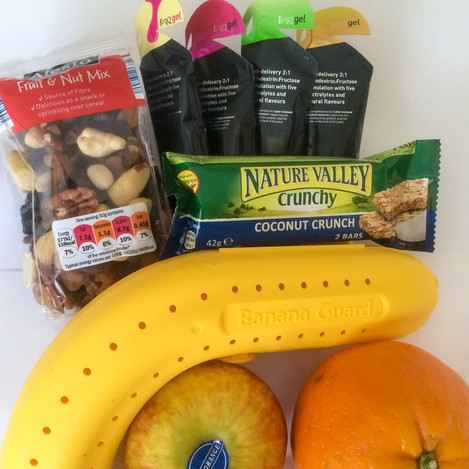
Food should be taken on a regular basis to avoid peaks and troughs in energy levels. Fresh fruit can help replace some of your lost fluids and electrolytes, cereal bars and nuts provide slow release carbohydrate, while gels can give you a rapid boost if your energy levels suddenly drop.
Personally, we always carry a couple of energy gels and bars as well. You may have seen elite cyclists on television using the gels - they provide an almost instant energy boost should you hit a sudden wall of fatigue. The bars are designed to provide slower release carbohydrate to renew your stamina over a longer period. Both weigh very little and are good to carry year round - for yourself, or in case you come across someone who is less well prepared..!
Slap it on, and Cover-up
As I write today in North Yorkshire - when the sky is overcast, and the temperature is around 13 degrees - the UV index is forecast at level 3. It only ever reaches 8 in the UK, and that is a rarity. However, even the current low level carries a risk of skin damage for those with pale complexions. If that is you, the advice is to limit your exposure to the direct sun to no more than 1-2 hours and apply a sun screen of at least factor 15. As we approach the Summer Solstice, the index is likely to rise - raising the risk for everyone, and reducing the safe exposure time with it.
It is easy to get this wrong in this Country - the sun doesn’t need to be beating down on you from a clear blue sky for you to get too much UV. Neil found this out to his cost only last month on a day’s walking at Hadrian’s Wall. The wind was blowing, as it often does in this Country, reducing the apparent temperature. The day moved in stages from chilly and overcast, through to sunny intervals, and Neil’s choice of shorts to walk in meant he got sunburned legs - without even realising it was happening.
Sun cream may have helped here, I do wear it myself when I know I am going to be out for long periods, however I find that it makes my hands and face greasy - which is then transferred to the photographic equipment. Personally, I prefer to cover up - wearing long sleeve shirts, full-length trousers, and a hat. Among my personal choices at the moment is the Paramo Katmai Light long sleeve shirt - made from lightweight, loose-fitting fabric, with a high sun protection factor.
The Katmai's loose fit allows the air to flow through, helping to keep you cool. The full-length trousers not only provide protection from UV but also lend some defence against ticks and other biting insects. There are any number of trouser manufacturers to choose from, but the fit is very important - especially if you are prone to cover serious distances. Personally, I have found leg wear made from stretch fabrics to be the most comfortable when I am on the move looking for landscape opportunities.
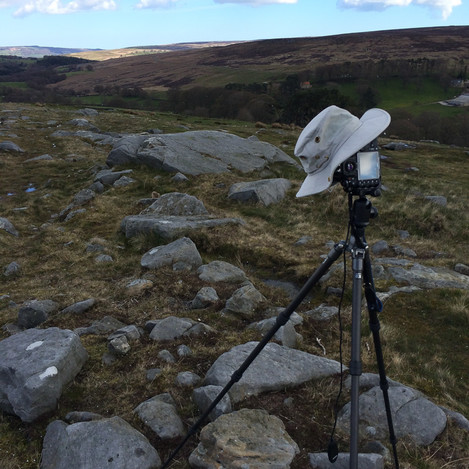 When it comes to headgear, we both choose broad-brimmed Tilley Hats for Summer walking and photography. These keep the sun out of your eyes as well as protecting your head and neck from UV. They can also be useful to shade a viewfinder or rear screen from the glare of harsh sunlight, or act as a make-shift lens shade - or rain cover for that matter if the weather should take a turn for the worse.
When it comes to headgear, we both choose broad-brimmed Tilley Hats for Summer walking and photography. These keep the sun out of your eyes as well as protecting your head and neck from UV. They can also be useful to shade a viewfinder or rear screen from the glare of harsh sunlight, or act as a make-shift lens shade - or rain cover for that matter if the weather should take a turn for the worse.
Baseball caps are OK if you don’t like to wear a full brim hat, but they don’t give any protection to the back of your neck. On that note, we always carry one or two ‘Buffs’ with us as well. These can be worn as a scarf around your neck, but they can also be made into several styles of beanie - including a ‘legionnaire’ shape with a shade for the back of your neck. You can even dip your Buff in water, ring it out a bit, and put it back on - a very effective way of cooling yourself down as the evaporating water takes the heat away from the large blood vessels in your neck.
Summary
None of the above is intended to frighten anyone. Neil and I both want to see more photographers out walking and shooting the landscape this Summer. However, it is important to make sure you are adequately prepared for the conditions - which can, in their way, be just as challenging as Winter. So as you planning your Summer photography trips, and you are thinking about the photographic kit you will take, don’t forget to think about some of the issues raised above. Make yourself a kit list, just as you may do for your camera gear, but base it around some of the following questions:
- How much water/other fluid should I be drinking, how am I going to carry it, and how am I going to ensure that I remember to drink it..?
- Am I taking the right foods to keep my energy levels up throughout the day..?
- Does my clothing provide suitable sun protection, and is it comfortable in hot weather..?
- Can I recognise signs of heat exhaustion, and do I know how to deal with it - in myself, or others..?
This is the first in a series of articles. Watch out for the next, which will appear in the Autumn, and will address some of the issues of being out and about in that most changeable of seasons.

